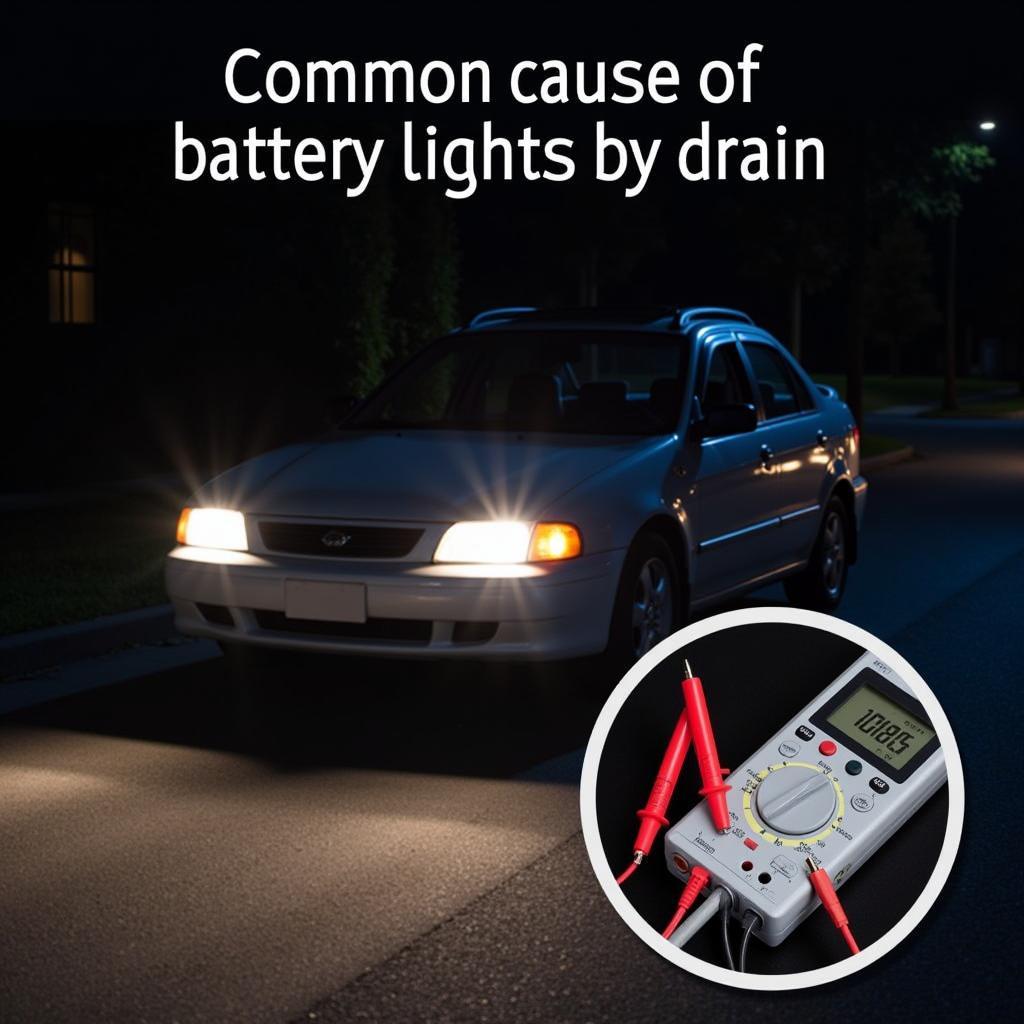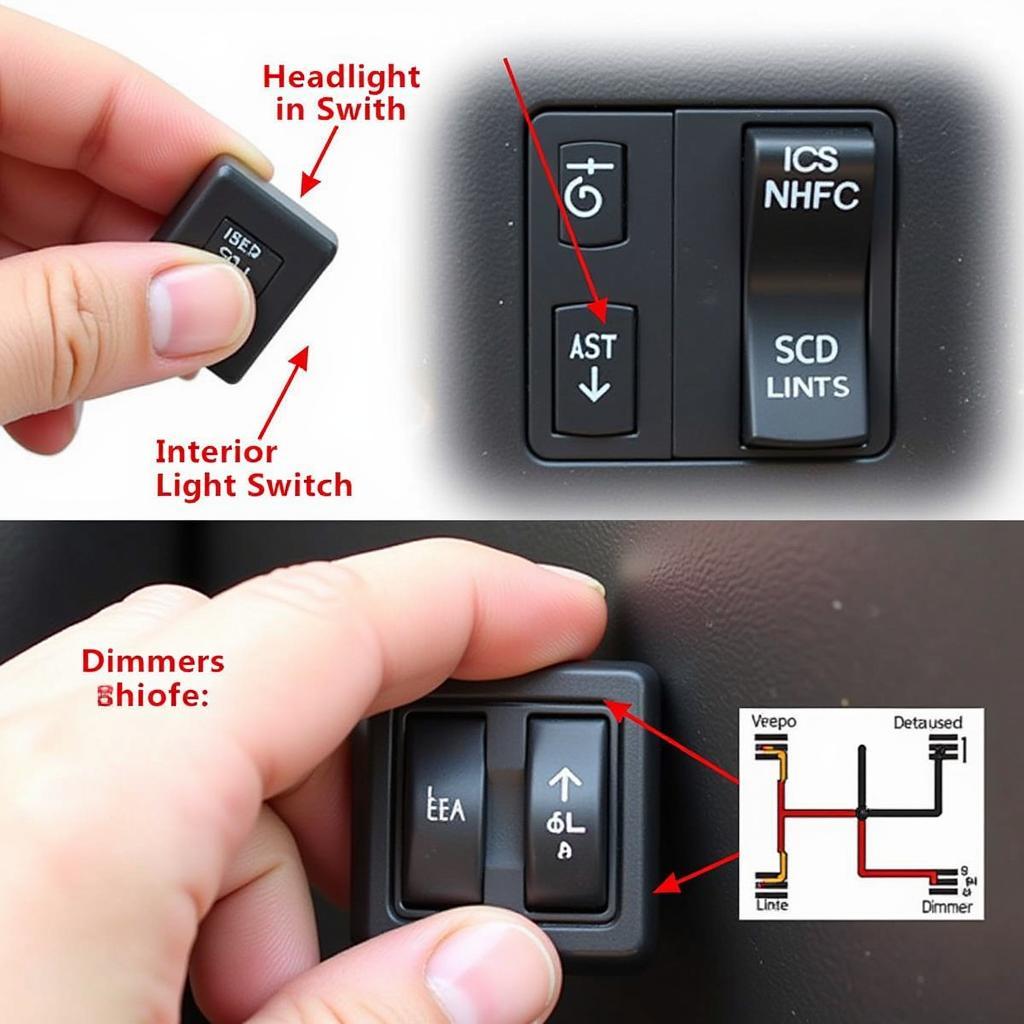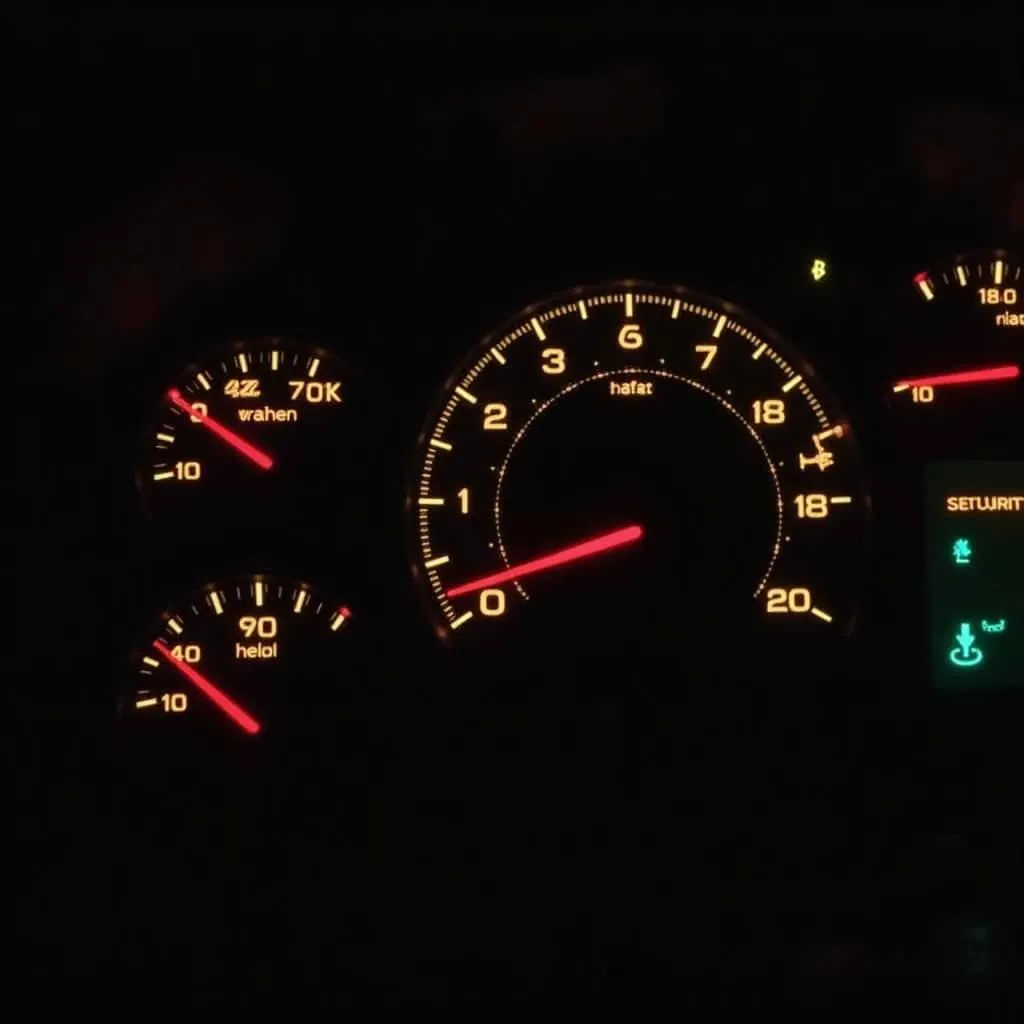Lights left on are a common culprit for a dead car battery. But sometimes, the issue is more complex than a simple forgotten switch. This guide delves into the various reasons why your lights might be draining your car battery, offering diagnostic tips and solutions to get you back on the road.
Why are My Car Lights Draining the Battery?
Several factors can contribute to lights draining your car battery. Understanding these causes is the first step towards a solution. These range from simple user errors to more complex electrical problems.
- Forgotten Lights: This is the most obvious reason. Interior lights, headlights, or even trunk lights left on can quickly deplete your battery, especially overnight. A simple double-check before leaving your car can prevent this.
- Faulty Light Switch: A malfunctioning switch can prevent lights from turning off completely, even when they appear to be off. This constant drain, though small, can eventually kill your battery.
- Wiring Problems: Damaged or corroded wiring in the lighting circuit can create a short circuit, leading to a continuous power drain. This can be more difficult to diagnose and often requires professional assistance.
- Bad Relay: The relay acts as a switch for the lights. If the relay is faulty, it may not disengage properly, causing the lights to stay on and drain the battery.
- Parasitic Draw: This refers to the small amount of current that certain electrical components continue to draw even when the car is off. While normal, a higher-than-normal parasitic draw, potentially caused by a faulty component related to the lighting system, can drain the battery prematurely. This might be due to a faulty alarm system, radio, or even a clock.
After the initial introduction about the common issue of leaving car lights on, you can explore similar situations like when new golf cart batteries drain quickly. While the vehicles are different, the underlying principles of battery drain are often similar.
 Car Battery Drained by Lights
Car Battery Drained by Lights
How to Diagnose Car Light Battery Drain
Diagnosing the root cause requires a systematic approach. Here are some steps to follow:
- Visual Inspection: Check all lights, inside and out, to ensure they are off. Pay close attention to the trunk, glove compartment, and under-hood lights.
- Battery Voltage Test: Use a multimeter to check the battery voltage. A fully charged battery should read around 12.6 volts. Lower readings indicate a drained battery.
- Parasitic Draw Test: This test involves measuring the current draw with the car off and all accessories turned off. A higher-than-normal draw suggests a parasitic drain, which might be related to the lighting system. Resources like battery drain parasitic draw testing offer detailed instructions on performing this test.
- Light Switch Check: Test the light switch for proper operation. If the switch feels loose or doesn’t click definitively, it may be faulty.
- Wiring Inspection: Carefully examine the wiring connected to the lights for any signs of damage, corrosion, or loose connections.
 Checking Car Light Switches
Checking Car Light Switches
Fixing the Problem
The solution depends on the diagnosed cause. Some fixes are straightforward, while others require professional expertise.
- Turn Off the Lights: If you simply forgot to turn off the lights, charging the battery or jump-starting the car should solve the issue.
- Replace Faulty Components: A bad light switch, relay, or wiring harness will need to be replaced. While some DIY enthusiasts might tackle these repairs, consulting a professional is recommended for complex electrical issues.
- Address Parasitic Draw: Identifying and fixing the source of the parasitic draw is crucial. This could involve replacing a faulty component or repairing a damaged wire. If you’re facing a persistent issue with your car not starting, it might be helpful to refer to articles on car keep dying or car wont crank battery good. These resources can provide insights into other potential causes beyond the lights.
- Remote Diagnostics and Programming: In certain cases, remote diagnostics and programming might be possible. This innovative approach allows technicians to identify and resolve software-related issues remotely, potentially saving time and money.
If you’ve recently experienced a dead battery overnight, articles on car battery died overnight can offer valuable insights and solutions.
Conclusion
Lights draining your car battery can be a frustrating experience. By understanding the potential causes and following the diagnostic steps outlined in this guide, you can identify the problem and take appropriate action. Whether it’s a simple fix or a more complex issue, addressing the problem promptly will help you avoid the inconvenience of a dead battery and keep your car running smoothly. Remember to always double-check your lights before leaving your car to prevent this common issue. Addressing this problem quickly will ensure your lights are functioning properly and prevent future battery drain.

